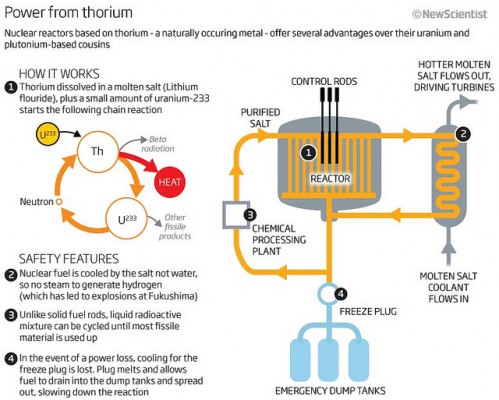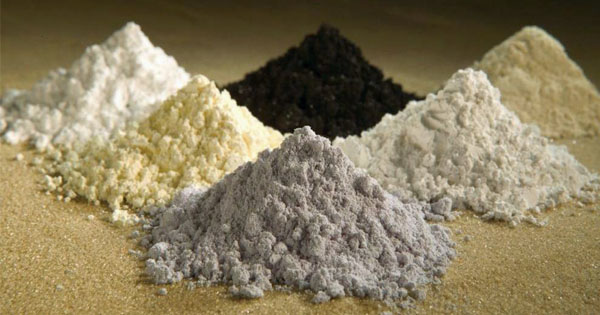Alternatives solutions to rare earths
Face a depletion of rare earths, with dramatic consequences on the environment and the Chinese leadership, other countries are trying to find alternatives to rare earths.
- Solution 1: Recycling
Recycling is the first solution on the rare earths. Indeed, we will recover rare metals in the electronic devices we use every day. To cope with the decline of the few Chinese leadership and the land, recycling becomes a raw material supply source. For example, the flow of post-industrial waste has already been made in the manufacture of magnets and semiconductors.
* recycling rate for dysprosium, neodymium and praseodymium are 1 and 10%.
*taux de recyclage du gallium (cellules solaires) sont de 10 à 25 %.
*recycling rate terbium, europium, yttrium (for lighting) are of roughly 1%
*Dysprosium, neodymium, europium and terbium are among the few land classified at high risk of shortages in Europe in 2020-2030 by the European Joint Research Centre (JRC source).
* The French company Rhodia began recycling the energy-saving lamps. For this, it has opened two factories in Saint-Fons (69) and Rochelle (17). In these plants is recovered white powder of low consumption lamps in Saint-Fons and is retiring at the Rochelle. In finality, extracted 6 REE and resells them. In addition, we continue recycling magnets for electric cars, hard drives, and rechargeable batteries, etc.
* At the University of Tokyo, Institute of Industrial Science has found a method to recycle up to 80% neodymium. Neodymium is a very important and coveted rare earth in green technologies.
* A group of Idaho National Laboratory scientist recycle fissile material from spent nuclear fuel rods. These researchers will apply the same methods to separate rare earth metals and other critical materials to consumer products.
We believe that electronics is like another type of ore,” says Eric Peterson, the driver of the business line for the INL Process Division of Science and Technology. “Consumer Recycling efforts today to recover about 40 to 50 percent of critical materials.” Our goal is to get more than 80 percent as the recovery. “Many of these are same as nuclear reprocessing research has focused for years. They are members of the lanthanide family, which inhibit the fission process, but are chemically similar to fissile actinides. INL scientists have a long history of expertise. They find new ways to effectively meet the lanthanides separated from complex mixtures. “in many ways, improving the recovery of critical materials is just a huge headache separations,” said Peterson. “INL has extensive experience in separations for nuclear and industrial applications. “
Of course, recycling can not cope with demand increasingly strong. It is a short term solution, extremely costly and not viable for all types of economic materials. But, it still allows secure, preserve rare metal resources.
- Solution 2: diversification of supply sources
The solution is to open or reopen dormant mines (closed) where rare metals are, that countries have put aside face competition from the Chinese.
- Solution 3: The substitution rare earth
Others read more about the substitution of rare earths. Indeed, we must develop products that have little or no need rare earths.
* For example, Toyota seeks to develop its hybrid cars, energy saving, using an induction motor without magnet. It could implement its strategy in the next two years.
* General Electric announces the creation of a wind turbine that needs very little rare earths.
* Toyota and General Motors prefer to rely on the induction motor that does not use some or magnets based on rare earths.
* Others choose the solution for synchronous motors (permanent magnet rotor). This solution is practiced by Siemens Leroy Somer.
* Samsung use optoelectronic materials to replace rare earths in some applications. Photonic materials enhance luminescence and have the advantage to dispense with rare earths. Samsung put into the search and opened an institute, with 3,000 researchers in the kynggi province in Korea.
* Hitachi company had managed to create a rare earth-free electric motor, which is designed to blow air in buildings and factories. They use a patented technology, an iron heart-based amorphous metal, which provides a cheaper alternative for the same performance.
 |
 |
- Solution 4: New exploration for rare earths
All countries of the world are scrambling to find alternative sources of rare earths. They seek rare earths on land or in the sea. The result is that there is rare earth in the bottom of the Pacific. Indeed, the Japanese discovered rare earth deposits in the Pacific as a layer of sludge. Furthermore, rare earths are also present in the sediments of the seabed in the eastern North Pacific around Hawaii and the South Pacific center east of Tahiti. Researchers in Japan have found rare earth deposits. There are over 393 projects ongoing explorations. The head deposits are Kvanefjeld Greenland Montvieil Quebec Mount Weld in Australia and Mountain Pass in California (in millions of rare earth oxides).
It is a real strategic war between countries, companies and geologists. Which requires taking into account the various constraints of cost, environmental issues (pollution) and extraction of rare earths.
Many deposits of rare earths may contain thorium and uranium “, emphasizes the Deputy Director of the Strategy BRGM.
Potentially toxic residues from metallurgy rare earths can pollute soil and water if strict management of these effluents is not in place.
It is essential to find greener solutions less harmful to the environment and health. It’s nice to have a nice cell phone, a flat screen TV or whatever. But at what price?
- Solution 5: supply of rare earth in countries other than China
Vietnam include, Malaysia, North America, Australia, Kazakhstan, South Africa, where the new African countries. Specifically, you need to purchase from countries that are not under the control of the land of milieu.Il must create partnerships, joint ventures with other companies for the exploration and exploitation of rare earths. All projects must take into account the environment, the price and the people of these countries.
Other countries other than China has reserves of rare earth.
- Solution 6: invest in research to find methods of extracting more environmentally friendly and safer rare earths.
Rare earths are a considerable asset. But if owning rare earths harm the environment and health of workers or the public. I personally find it very dangerous. It says the last are first. And the first last. China has a virtual monopoly on rare earths. They got rich. But at what price? It neglecting their environment, the health of their workers or the population. They have a lot of work to try to make amends.













